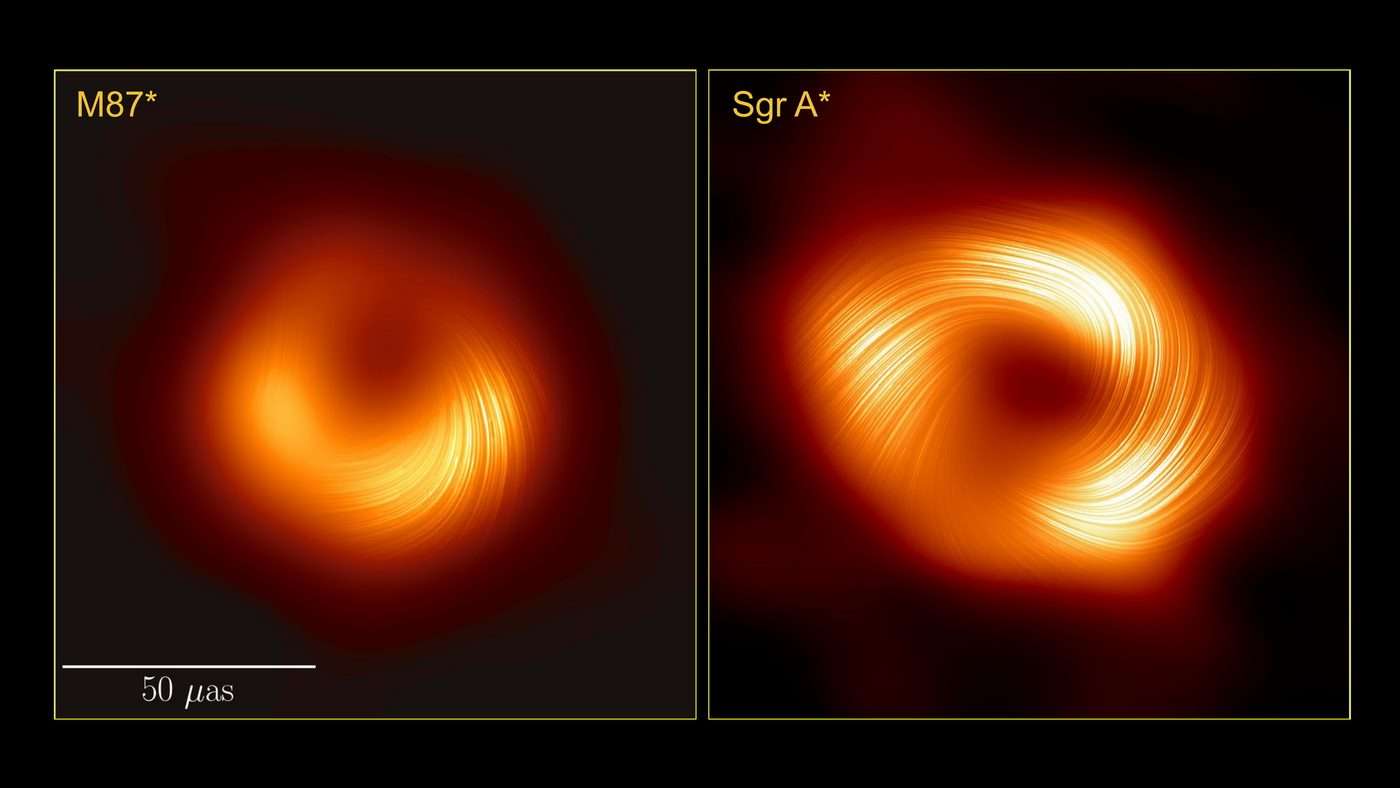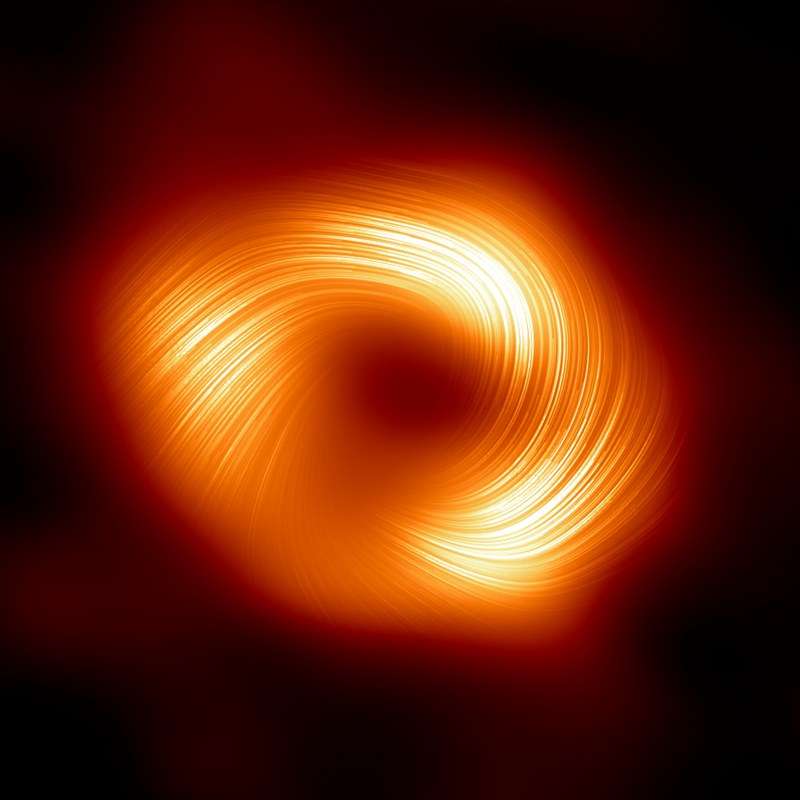Woman Given New 3D-Printed Windpipe in World First
The one-of-a-kind 3D printer, designed with over a decade of research and testing, was provided by the company T&R Biofab.

As part of humanity's continued attempts to image a black hole, a telescope array recently captured the swirling magnetic fields around two of the closest supermassive black holes to Earth.
Seen in polarized light for the first time, this new view of the black hole Sagittarius A. at the heart of the Milky Way Galaxy has revealed a magnetic field structure strikingly similar to that of the black hole at the center of the Messier 87 galaxy, suggesting that strong magnetic fields may be common to all black holes.
This similarity also hints toward a hidden jet in Sgr A*. The results were published today in The Astrophysical Journal Letters.
Scientists unveiled the first image of Sgr A*—which is approximately 27,000 light-years away from Earth—in 2022, revealing that while the Milky Way's supermassive black hole is more than a thousand times smaller and less massive than M87's, it looks remarkably similar. This made scientists wonder whether the two shared common traits outside of their looks.
To find out, the team decided to study Sgr A* in polarized light. Previous studies of light around M87* revealed that the magnetic fields around the black hole giant allowed it to launch powerful jets of material back into the surrounding environment. Building on this work, the new images have revealed that the same may be true for Sgr A*.
"What we're seeing now is that there are strong, twisted, and organized magnetic fields near the black hole at the center of the Milky Way galaxy," said Sara Issaoun, NASA Hubble Fellowship Program from Harvard and the Smithsonian who co-led the project.
"Along with Sgr A* having a strikingly similar polarization structure to that seen in the much larger and more powerful M87* black hole, we've learned that strong and ordered magnetic fields are critical to how black holes interact with the gas and matter around them."
Light is an oscillating, or moving, electromagnetic wave that allows us to see objects. Sometimes, light oscillates in a preferred orientation, and we call it "polarized." Although polarized light surrounds us, to human eyes it is indistinguishable from "normal" light. In the plasma around these black holes, particles whirling around magnetic field lines impart a polarization pattern perpendicular to the field.
This allows astronomers to see in increasingly vivid detail what's happening in black hole regions and map their magnetic field lines.
"By imaging polarized light from hot glowing gas near black holes, we are directly inferring the structure and strength of the magnetic fields that thread the flow of gas and matter that the black hole feeds on and ejects," said Harvard Black Hole Initiative Fellow and project co-lead Angelo Ricarte. "Polarized light teaches us a lot more about the astrophysics, the properties of the gas, and mechanisms that take place as a black hole feeds."

Imaging the supermassive black hole requires sophisticated tools above and beyond those previously used for capturing M87*, a much steadier target.
"Making a polarized image is like opening the book after you have only seen the cover. Because Sgr A* moves around while we try to take its picture, it was difficult to construct even the unpolarized image," said EHT Project Scientist Geoffrey Bower. "We were relieved that polarized imaging was even possible. Some models were far too scrambled and turbulent to construct a polarized image, but nature was not so cruel."
The result is that the images of Sgr A* is a composite of multiple images.
The EHT has conducted several observations since 2017 and is scheduled to observe Sgr A* again in April 2024. Each year, the images improve as the EHT incorporates new telescopes, larger bandwidth, and new observing frequencies.
SHARE This Never-Before-Seen-Look At A Black Hole With Your Friends…
Be the first to comment